52 Ancestors in 52 Weeks, Week 8: Power
PROMPT: “Power.” Does that mean physical strength, political power, power in the family, electrical power? Yes. 😉 It’s a vague theme on purpose 🙂 It’s whatever the theme sparks in you.

Once Henry Ford successfully installed an assembly line for the mass production of automobiles in December of 1913, the increased demand for gasoline gave those in the petroleum division power, i.e., enriched the market for their product. Gasoline is also the power—or fuel—upon which Ford’s 22-horsepower, four-cylinder internal combustion engine was dependent.
Several members of my mother’s family—the Hardings—had ties to the petroleum industry.
I never met my Great-Grandfather Reginald Harding—referred to as “Gramps” by my mother—but thanks to digital collections online, I have been able to piece together glimpses of his life and his family’s lives in the early part of the twentieth century in Junction City and Wakefield, Kansas.
Like his older siblings, Reginald Harding was born in London. He was four years old when he, his parents, and his five older siblings left England and immigrated to the United States. Reginald is an intriguing ancestor whom I plan to feature in future posts, but this particular post will focus on the filling stations that he and his older brother Ed owned and managed.
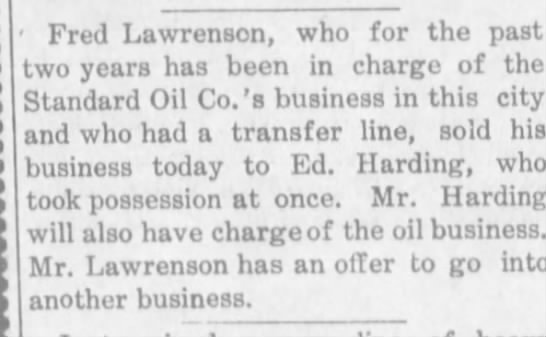
31 May 1907
In piecing together the following newspaper clippings, it’s not clear to me who exactly owned and managed the filling stations at any one time, but it appears that it was Ed who first bought a Standard Oil station in Junction City in 1907.

Because the photo above was taken in Junction City, and because Reginald had taken ownership of a Standard Oil station in Wakefield prior to 1916, the “Mr. Harding” pictured here must be Ed Harding.

30 Apr 1917

06 Apr 1918

04 Jul 1918

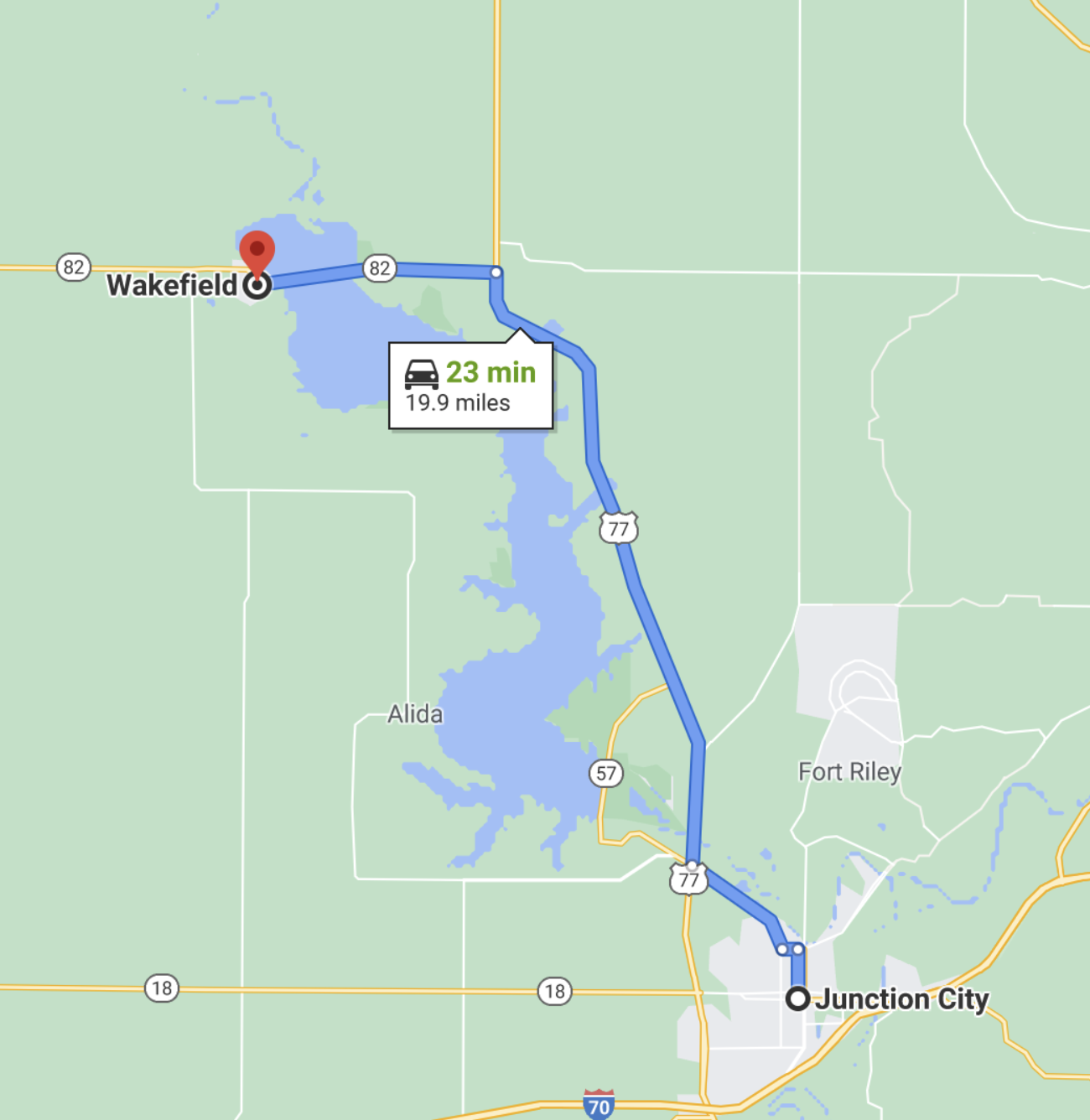
Eight years after Ed took over ownership of the Standard Oil station in Junction City, Reginald–“R. Harding”–moved to Wakefield to manage a Standard Oil station there. I am fairly certain that this was a separate station. I base this on the fact that (1) my mother has talked of “Gramps’s filling station” (with no mention of his brother–her great uncle), (2) nineteen miles separate Junction City and Wakefield, and (3) mentions of Ed Harding always appear in the Junction City Daily Union; mentions of Reginald or “R.” Harding after 1915 always appear in the Wakefield News.
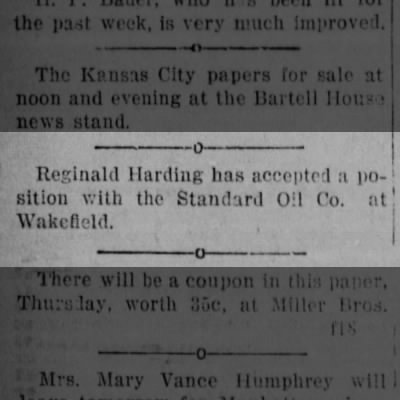
16 Feb 1915

19 Aug 1915

02 Sep 1915
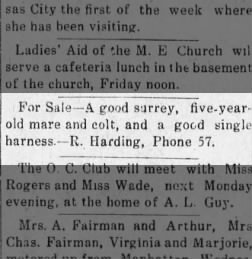
The automobile had apparently not completely replaced the horse and buggy based upon this personal ad placed in The Wakefield News in 1915 by Reginald. I wonder: did it come with fringe on top?!
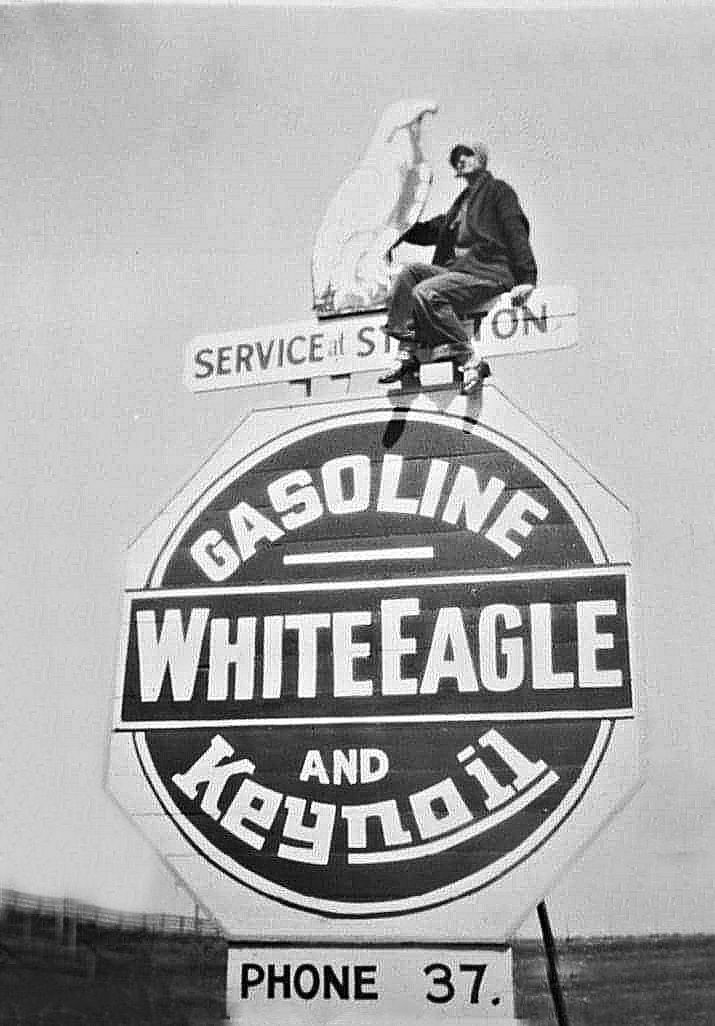

At some point prior to March of 1921, Reginald’s station either changed from a Standard Oil franchise to a White Eagle Oil franchise, or he acquired a second station. Above is a vintage photo of a White Eagle Oil sign and a newspaper clipping from the Wakefield News dated March 2, 1921.


These two photographs of my Great-Grandfather Reginald’s filling station in Wakefield are family treasures.
Can you imagine the entire readership of the local newspaper learning that you had just purchased a new car? Or, for that matter, that you had purchased a new business or that you and your family had moved to another town?

15 Jan 1920
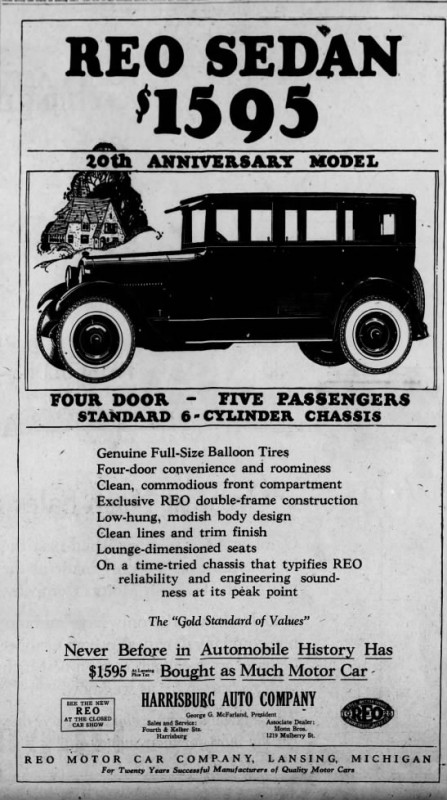

09 May 1918
Seeing personal information such as this in print for public consumption seems odd to us today. If today’s media printed items like these, we would see it as an invasion of privacy.
The availability of news items like those included in this post give those of us with the time, energy, and interest to devote to perusing old newspapers just a little more insight into our ancestors’ lives than we would otherwise have.
And a keen sense of how writing styles and practices have changed over the years.



So interesting! Your father’s side of the family was “cutting edge”. That was quite a car! I am contrasting this with my grandpa Eli Cathcart who sold his farm in March 1954 to John & Rose O’Neil. Grandpa Eli never farmed with tractors. He sold the farm at age 84, so I know he was farming with horses in the early 1950s. I’ll ask my sisters whether Grandpa Eli owned – or drove – a car.
Jack spent his career as a researcher for ExxonMobil, so we are generations behind your father’s side of the family, although I have a photo of Jack’s Swedish relatives in Vasa Minnesota – driving a car in 1916.
LikeLiked by 2 people
Always appreciate your responses, Carol, and the additional things I learn about my family through them!
LikeLike
Carol, I meant to answer this earlier.
The Hardings are not my father’s side of the family but my mother’s paternal line.
Interesting that you should remark on Eli never farming with tractors. My mother recently told me the same about Tom Cathcart and remembering his pair of mules.
In a previous post “Food for Thought”, I shared how my mother’s observations on how primitive her Grandmother Cathcart’s kitchen was compared to her Grandmother Hardings’. You can read it here: https://talkingleaves.blog/2021/02/07/food-for-thought/
LikeLike